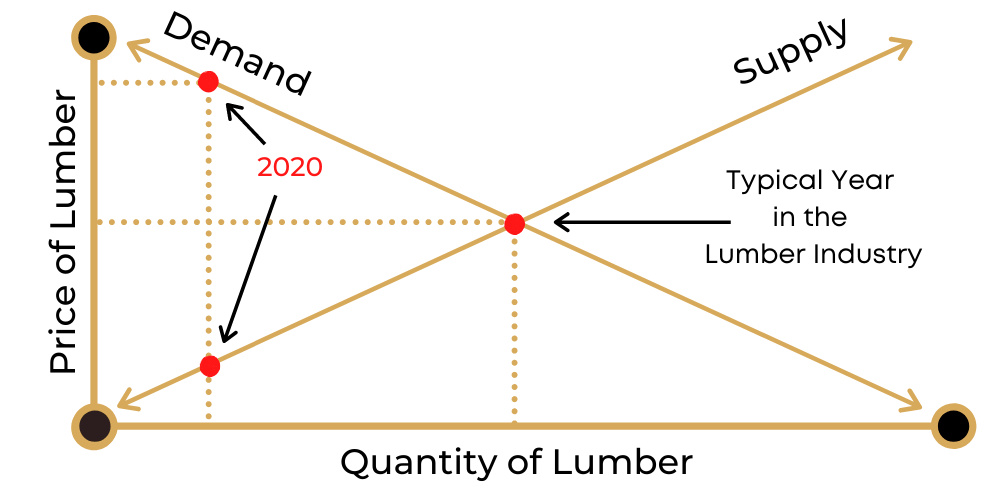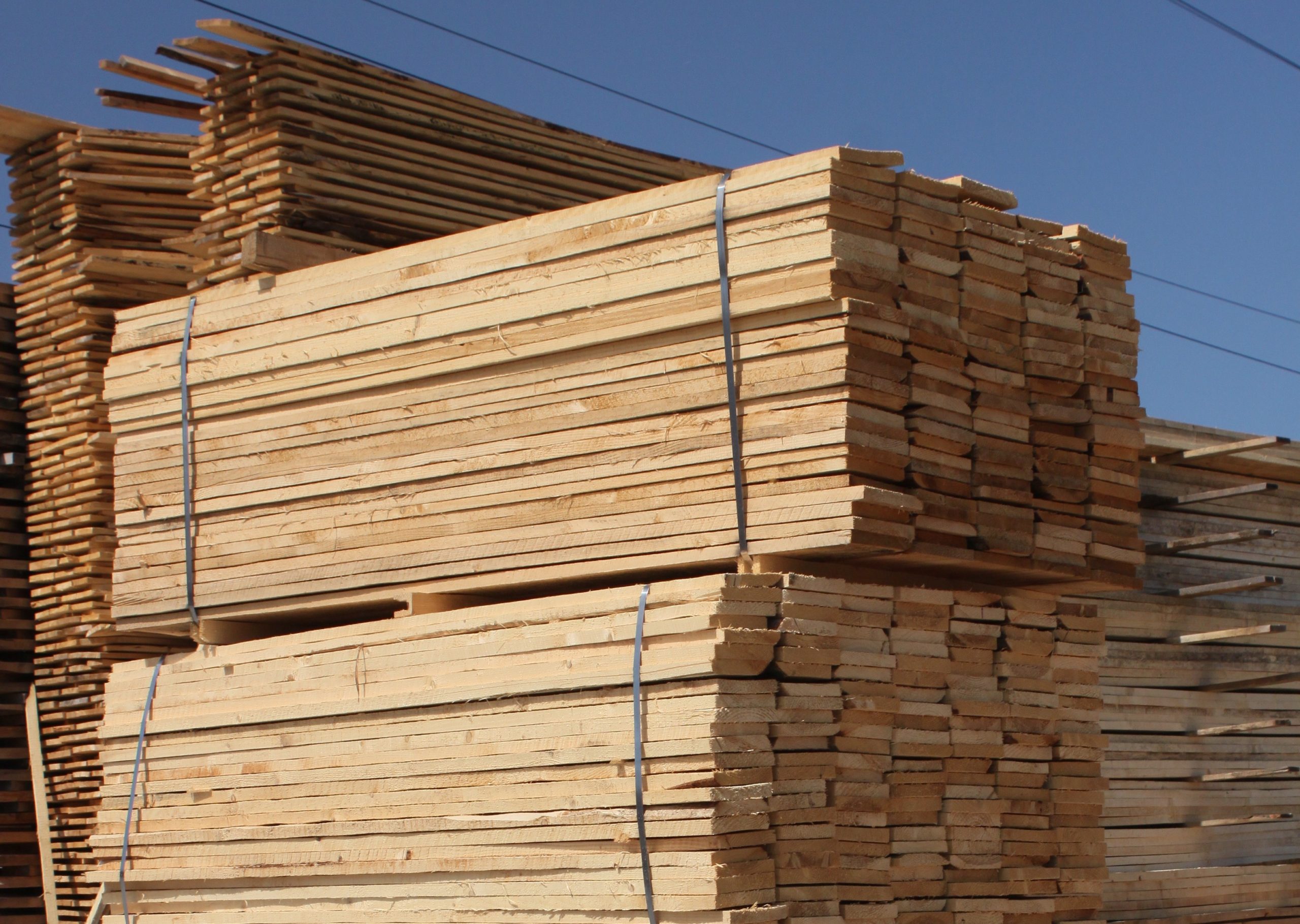If you’ve tried to do any home improvements in the last few months, you’ve already learned about the increase in lumber prices the hard way. It’s making the prices of homes skyrocket. But what exactly is going on with lumber? Why are prices so high? Is there really a lumber shortage, or is something else going on?
Is There a Lumber Shortage?
Yes, there is a lumber shortage, but there’s no one cause to the shortage. The problem of the regular and treated lumber shortage comes down to multiple factors. The reasons why lumber prices are so high boils down to a demand for new homes, the increase in remodeling projects during the stay-at-home period of the pandemic, sawmill shutdowns, problems with transportation, and Canadian lumber tariffs. The lumber shortage in 2021 is worse than the lumber shortage of 2020, but the shortage is expected to ease as sawmills reopen and begin to process their stockpiles of logs.

While the question of “why are lumber prices going up?” may linger for a while, the consumer will eventually see lower prices again. Lumber is a commodity that’s traded on the NASDAQ, and is also subject to bulk buyers who are looking for the lowest prices. Lumberyards and home improvement chains seek to maximize profit on lower costs, and they know that high prices reduces their profitability. In the meantime, consumers who can put off their projects for a little while longer have a good chance of getting more lumber for their money than they would if they bought in the near future.
What is Causing the Lumber Shortage?
Economists will always point to supply and demand being the number one cause for the lumber shortage. While it’s true that there’s less lumber available for purchase, this is not the only reason why lumber prices are so high. The COVID-19 lockdowns across the continent caused sawmill production to come to a grinding halt as governments and industries tried to figure out how to handle the spread of the virus. The shutting down of the lumber industry caused a ripple effect that has everyone asking “why are lumber prices so high?”
Shutting down a manufacturing operation of any type is easy; restarting it is difficult. In the U.S., the federal government deemed the lumber industry non-essential, causing the mills to shut down for weeks and months before being allowed to reopen. The initial demand for lumber dropped off due to the lack of demand, but quickly surged again as people and industries started their home improvement and home construction plans. All available stocks of surplus lumber were quickly depleted with little in the way of replenishment due to the closing of the saw mills. Eventually the saw mills were able to reopen, but returning to full capacity takes months, not to mention the difficulty of getting the product to market.
Restarting a saw mill requires re-hiring of employees, sourcing raw materials, repairing and restarting equipment that’s not designed to stay idle for long periods of time, and finding ways of getting the finished materials to market. All of these issues are costly and are made even more so by the labor shortage. While many people went on unemployment, others found their way into different jobs and most aren’t rushing back to work in the lumber industry. Saw mills are increasing their starting wages to attract employees, something that also adds to the overall cost of lumber. The trucking industry, a vital link in the lumber supply chain, has been experiencing a shortage of drivers for years. The pandemic made the driver shortage even worse and made it harder to get lumber to the markets.
Retailers also play a role in the lumber shortage due to their “just in time” model of stocking their stores. The “just in time” model works in retailers favor when all the cogs in the supply chain are working, but fails spectacularly when one cog encounters a hitch or fails entirely. This model relies on merchandise reaching the store shelves just before stock is anticipated to run out. However, when a pandemic shutters an entire industry, the retailers lose out on sales due to a lack of product, and have to increase their prices to purchase more stock, which is also more expensive, whenever it’s available.

When Will the Lumber Shortage End?
It’s difficult to determine how long the lumber shortage will last. It’s also hard to say when the lumber prices will go down. The initial lockdown from COVID created a pause in the supply chains, then demand for lumber increased almost immediately afterwards, and it left everyone asking “why are lumber prices going up?” Now the general question is “will lumber prices go down?” The short answer is yes. Lumber prices will eventually return to normal, but it’s going to be a bumpy ride on the way down.
One thing that will keep lumber prices higher over the long term is the fact that there is a tariff on Canadian lumber. Tariffs are designed to protect American industries that are in distress and give them the opportunity to get to profitability without being undercut by foreign goods that cost less. Canadian lumber still makes it to the U.S. market, but won’t lower the overall cost due to the tariffs putting an additional cost on the materials. The tariffs are expected to stay in place through the end of 2021 and into 2022. This may result in people asking “why are wood prices so high?” long after other pressures on the lumber supply eases.
Lumber buyers frequently turn to Canadian suppliers when U.S. supplies are low. The buyers seek out the lowest cost lumber first, then look for other sources which are usually more expensive. Prices go up when a buyer has to turn to a more expensive source of lumber in order to meet demand. The potential for price swings in lumber is still there, but it’s more likely to be nominal instead of double or triple the average cost for a single piece.
There is light at the end of the tunnel when it comes to the end of the lumber shortage. All industries exist to supply goods for a specific market, and the lumber industry is no different. Nor do retailers care to charge their customers outrageously high prices for an extended period of time as this results in fewer sales. It’s normal to be a little cynical and expect a retailer to keep their prices higher than they were before the price of lumber shot up, but retailers also like to move their inventory. More people will return to work and have less time for home improvement projects even though work from home is likely to stick around in a hybrid fashion. And eventually the demand for homes will ease up and reduce the pressure for lumber. There will come a point where the lumber shortage of 2021 will be a distant memory as prices return to normal.
Related:
